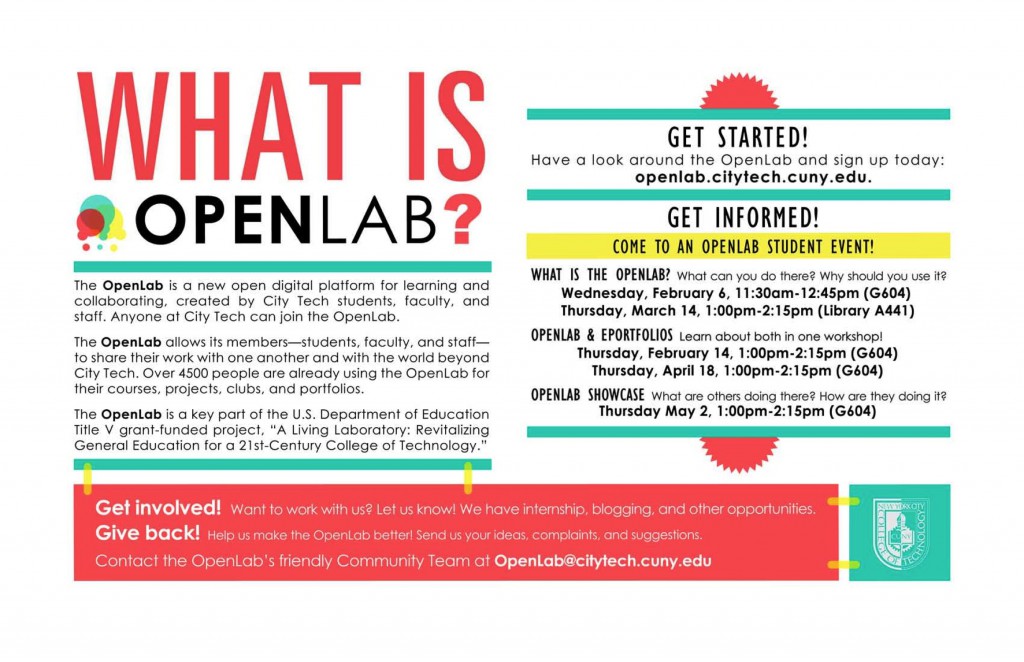Essay #1:
Essay #1 is due on Monday, but I haven’t heard much about Part 2–how is it going? Please bring a paper copy of both parts of Essay #1 to class on Monday. Once i see that everyone has these materials, I will ask you to do some reflective writing about your writing process and will then provide directions for submitting your work electronically.
If you still have questions about Essay #1, please ask them! I know there must be questions, and better to be brave and ask them now than wonder and guess and have no guidance.
Blogging for homework:
At the Brooklyn Historical Society on Wednesday, I asked you to blog for homework. I’ve added some more suggestions to the instructions, so this might be more helpful:
After class, write a blog post in which you elaborate on the materials you examined in class. You might begin with your one-sentence presentation. If your item can be posted on the blog, please share the photograph; if it can’t, you might describe it for your readers. This blog post is the place to say all the smart things you observed and interpreted but didn’t have a chance to present to the class. You can reflect further on the questions of how the “big guy” in “Only the Dead Know Brooklyn” gets to know Brooklyn, and how you have, or you might think about what was missing from our exploration at BHS, what you would have liked to examine. This blog post could also be the chance for you to include other materials that you know about or seek out. Remember to include a citation for any materials you use, including the items from BHS and “Only the Dead Know Brooklyn.” Choose the category Homework, and tag your post with whatever tags you think represent your work.
For those of you who missed class, please use the BHS visit 1 handout I distributed at BHS and any of the following materials to complete the assignment:
Map of the New York City subway system. 1955. Brooklyn Historical Society Map Collection.
Who Lives Where. Guenter Vollath. 1985. Brooklyn Historical Society Map Collection. (not the first map in the post)
Brooklyn and how to get to the World’s Fair. 1939. Brooklyn Historical Society Map Collection. (first map)
Dry Dock 1, 1928, v1973.5.875; Photography Collection; Brooklyn Historical Society.
Coney Island Beach, ca. 1968, v1988.12.41; Otto Dreschmeyer Brooklyn Slides Collection, V1988.012; Brooklyn Historical Society.
And more:
We will begin blogging in a rotating cycle again, so if you have any other requests or suggestions, please let me know what they are. Our next round of blogging will be geared toward preparing for the midterm exam, which will be on 3/20 in class.




